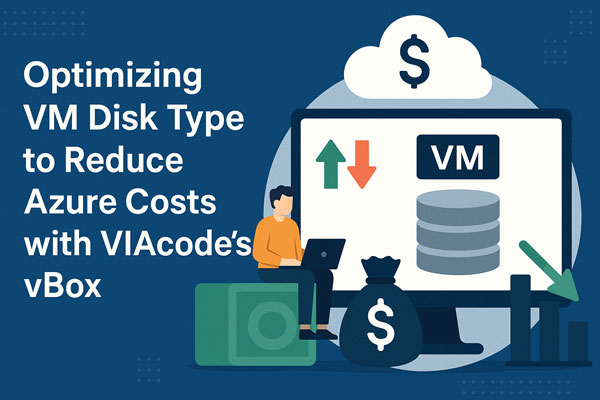Amazon Web Services was first introduced to the world with the release of Simple Queue Service in 2004. Relaunched in 2006 with the addition of S3 and EC2, AWS quickly grew into the dominant cloud platform. Microsoft was slower off the blocks than Amazon. Azure was announced in 2008, released in 2010 as Windows Azure, and was renamed Microsoft Azure in 2014.
But, in spite of starting later, Azure has grown into a robust platform that is as capable as AWS. Because of Microsoft’s expertise with enterprise software and services, it is superior as a business cloud platform for many use cases.
In this article, we’ll look at just some of the reasons that Microsoft Azure is an excellent choice for the future of your business’s cloud migration and infrastructure hosting strategy.
Azure Is Less Expensive Compared to AWS
AWS is known for its complex and arcane pricing structure. Many businesses have been surprised by their AWS bill because they didn’t understand the pricing structure. As an enterprise-focused business that has decades of experience providing services to businesses, Microsoft offers a cleaner pricing structure that is presented with greater transparency. There’s less likelihood of being surprised when you get your infrastructure bill from Azure.
If you were to look at the price structures of Azure and AWS, the infrastructure costs are roughly comparable. There are, of course, differences between the base rates for infrastructure, but, on average, it’s a wash. However, Microsoft Azure often works out much less expensive in real terms for businesses that are already invested in the Microsoft ecosystem.
Microsoft aggressively prices infrastructure and licenses to attract business users to the platform.
For example, a business that migrates a Windows server instance to AWS would have to pay for a new license. An Azure user does not have to purchase a new license. They can use their existing licenses on virtual machines running on Azure. Additionally, only Azure offers free extended support for older versions of Windows Server. On any other cloud platform, users will have to pay for a new license and extended updates.
These cost savings relative to other platforms are part of the Azure Hybrid Benefit, a pricing offering aimed at businesses with existing Windows Server and SQL Server licenses. Eligible customers pay a reduced rate for Azure Virtual Machines and Azure SQL database hosting. Their licenses can be used both for on-prem and cloud servers.
Finally, by taking advantage of offers like Free Migration to Azure Cloud and Free Migration to Azure for SQL Server from VIACode, the migration itself can be carried out for free. With the support of Microsoft, we can offer free lift-and-shift migration programs that transfer your on-premises workloads to Azure at no cost.
Cohesive Access and Identity Management
Active Directory is one of Microsoft’s greatest strengths in the cloud and on-premises. No other cloud provider offers such capable identity management and authentication tool. AWS has a strong identity and authentication management solution with IAM, but Active Directory has grown over the decades to become by far the most powerful and easy-to-use tool in this space.
Active Directory can be used to manage identity and access for both external resources, such as Microsoft Office and Azure infrastructure, and internal resources such as your applications and corporate network. It provides a single cohesive solution that is unmatched by any other similar system.
For companies that already rely on Active Directory and already have staff trained to use it, Azure is a natural choice for cloud infrastructure.
Azure Makes Hybrid Cloud Easy vs. AWS
Many businesses run a mix of on-premises and cloud infrastructure. Public and private cloud deployments each have unique advantages, and it makes sense to leverage the modality that best fits the needs of particular workloads and applications.
Additionally, few businesses want or need to migrate all of their infrastructures at once. Even if they do plan to migrate most infrastructure to Azure, they will operate a hybrid environment for some time.
Microsoft has focused on improving the hybrid experience since it first launched Azure. While it is possible to build hybrid clouds on AWS, it tends to be more complicated and expensive, especially for businesses that use Microsoft software products extensively.
We have already mentioned Active Directory as a powerful tool for managing identity, access, and single sign-on across public, private, and bare-metal platforms. But Active Directory is only one of the hybrid cloud tools available on Microsoft Azure.
Azure Stack is a collection of tools that extend Azure to make it easier to deploy and manage applications on hybrid infrastructure. It includes all of Azure’s public cloud services, of which there are more than a hundred. It also allows Azure customers to run cloud services and virtualized applications with on-premises hardware, applying a consistent DevOps approach across all infrastructure.
Perhaps most interestingly, Azure Stack helps businesses to meet specific regulatory and policy requirements for their on-premises applications without changing the code.
Being able to use consistent tooling, processes, and workflows across all infrastructure, not to mention combined identity management and authentication, can save businesses a considerable amount of time and money.
Microsoft Is All-in on Azure
Just a few years ago, it would have seemed absurd to call Microsoft a cloud company. It was primarily focused on the same enterprise software model that had brought it to a position of global dominance.
But, in the Satya Nadella era, Microsoft successfully transitioned to a cloud and services provider. Azure is the future of Microsoft, and the company has invested massive resources and its considerable enterprise experience in building a platform that solves almost all of the infrastructure problems of modern businesses.
To learn more about how VIAcode can bring your applications to Azure for free, fill out the form below to talk with one of our Azure migration experts.


